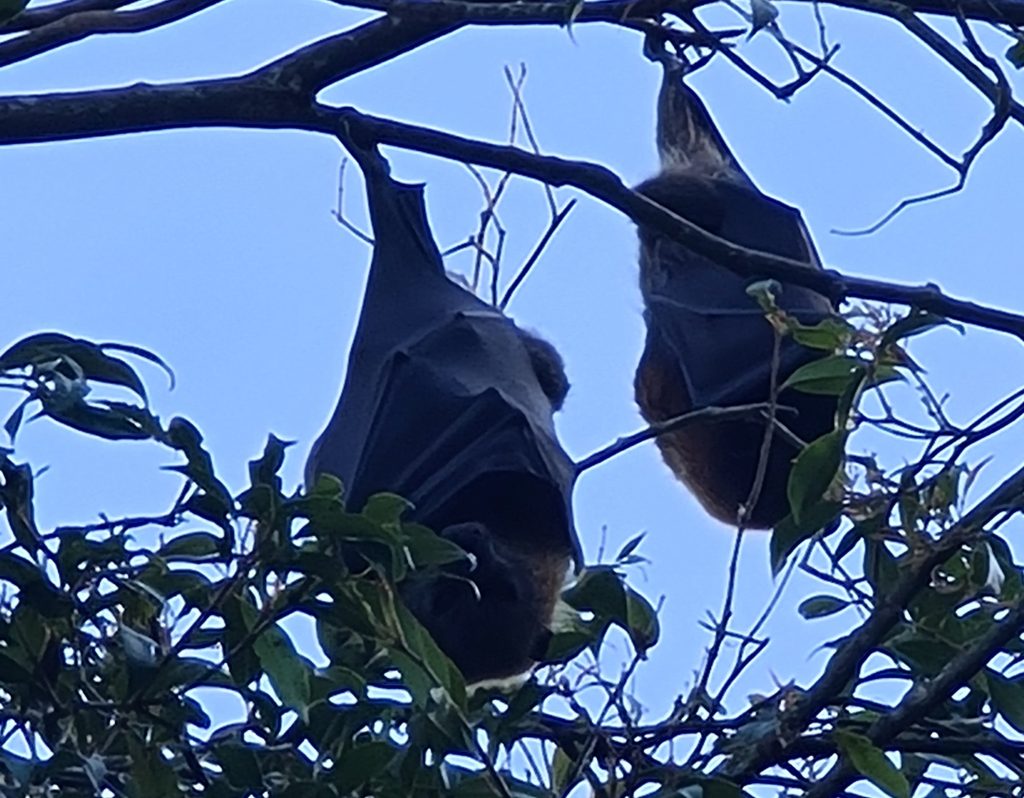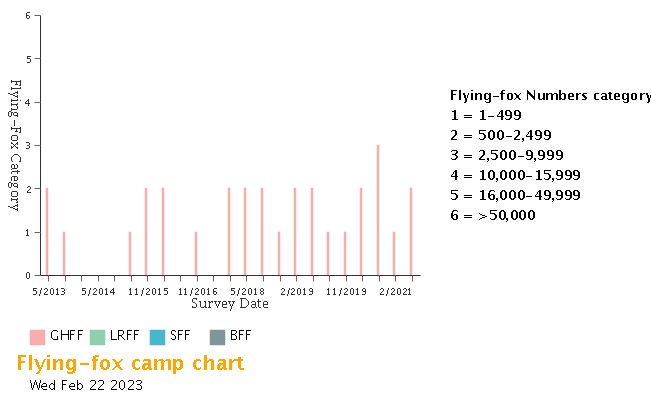Grey-headed flying foxes drop in for a feast in Warrnambool
In the dark of night, they announce their arrival with the leathery snap of their wings. Their wings span up to one metre! If you startle them accidentally, visions of Dracula may briefly flit through your head as they wheel through the sky. It’s that time of year again, when our fruit trees are visited nightly by a gregarious gang of grey-headed flying foxes.

These gentle vegetarians feed on fruit and flowers and are certainly the largest native mammals that visit our house in very suburban Warrnambool. Each year in February they take up residence in the Warrnambool Botanic Gardens, where they roost by day in their thousands, while at night they disperse in small groups to see what they can find to feast on.
Grey-headed flying foxes are nationally recognised as vulnerable and although they are seen in large numbers in colonies, known as camps, they are very vulnerable to extinction. Flying foxes are what is known as keystone species, those species that hold the ecosystem together, and without them the ecosystem would be very different. In the case of the flying foxes, their efforts to find blossoms to nibble and fruit to feast on are invaluable in pollinating and dispersing the seeds of native plants. Because they are relatively large, they eat quite a lot and move large distances to forage for food; they can readily do something that few other mammals can do, they can transport plant genetic material (pollen and seeds) from patch to patch.

This is a priceless service in our heavily cleared landscape. Their efforts ensure that genetic diversity is maintained by spreading pollen between fragmented and separated patches of bush and by depositing well-fertilised seeds where they need to be.
When food supplies are low in the bush, they move into urban and agricultural areas looking for food, hence their interest in our nectarine tree.
If you would like to learn more about flying foxes and their numbers you can take a look at the National Flying-fox Monitoring Program viewer which has interactive data recorded on all species of flying fox, so you can click and zoom-in to find out more about flying foxes in your local area. There is still a lot we don’t understand about them, including where they go and how far they travel so monitoring is important. The graph below shows that flying fox numbers in Warrnambool are relatively stable since 2013 but varies wildly from year to year. Climate change is a major risk to this species which doesn’t tolerate high temperatures very well and extreme heat events result in very high, and fast mass mortality events.
For now, I count us very lucky to see these animals up close and personal, and if we have to pay a small price in nectarines, then so be it!

